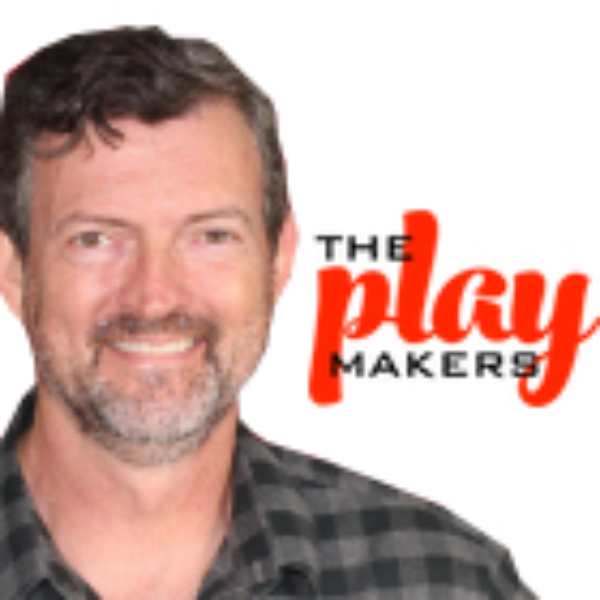Doug Reuter on SEQUENCE, Inventing, and Life Challenges
by Douglas Reuter | 18 Aug 2022
Biographies and Interviews

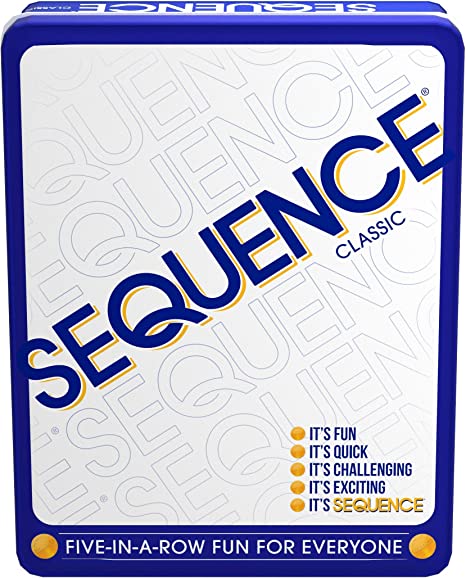
The toy and game industry has given me the life I could only dream of as a child. The efforts of people in the toy and game industry - the manufacturers especially - provide toy and game inventors the outlet – the opportunity - to get that next best invention in the hands of the public.
My claim to fame in the industry is that I am the inventor of the family board game SEQUENCE. It took four years to invent, three more to get it licensed and almost one more year before the first copy was sold in a store. More on that process later but first, a little history would be helpful.
I was the middle child of three boys – four years apart in age. We grew up in Minneapolis where winters are cold and playing games in a warm house was better than playing outside. So, we played a lot of games as kids. My two brothers were exceptionally intelligent and virtually had photographic memories. They took after my dad who skipped the third grade! My older brother got a degree in Nuclear Physics and my younger brother became a lawyer and later a Judge. I, on the other hand, had a creative mind. And, I was not averse to taking risks, which can be a dangerous mix.
If you asked a lot of my friends for a word or two to describe me, they would most likely say that Doug is a RULES guy. They would say he writes rules for the games he invents to ensure the games are played the way he intended them to be played. This life attribute came in handy while serving two terms in the Minnesota House of Representatives where I used all the rules available to me to my advantage and against opponents.
I think it takes a risk taker to invent things. Well, at least to invent things that you eventually want to see manufactured. You certainly can’t be afraid of failure if you’re going to be an inventor. But then maybe I’d have to define failure. I’ll leave that job to others. Inventors have to be able to take rejection and move on and not be so traumatized by rejection that you quit inventing. Develop thick skin if you are an inventor.
I really enjoy telling the story about SEQUENCE. That story started in 1974. Sometimes a game idea will pop into my head. Sometimes I will conceive an idea on what a final product would look like but more importantly play like. Sometimes I’ve been known to put an idea that’s about 10% developed on the shelf for a while. Sometimes those ideas never come off the shelf. There’s a game sitting on my desk that I started almost eight years ago and it just sits there and looks me in the face every day, challenging me to pick it up and work on it.
But, in the case of SEQUENCE, the basic concept actually came to me in a dream. I woke up about 2:30 am one morning having had a pretty vivid dream about a game. I got up, found a pencil and paper and wrote down everything I could remember about my dream.
The basics of my dream were, 100 cards on a board that was 10 rows by 10 columns. All the cards appeared to be mixed up. In my dream, there were two sets of five chips in a row on the board – one vertical and the other on a diagonal. That was the dream. I had to fill in all the other details that became SEQUENCE. As I said earlier, that took me four years.
I’ll add here that I believe one of the most important aspects of the inventing process is testing. Test, test, test! If you change one single aspect of your game, no matter how small the change you think it is, test the heck out of it. If you make a change and don’t test play the change, you may find yourself in a mess later on and may not have a clue where the game went off the rail.
If you think about the game Mastermind, you can make one wrong assumption and chase that rabbit for three or more turns. Don’t assume anything! Test every change and keep notes regarding your testing. You might be surprised how handy those notes might help you later.
Back to my story. The next morning I got a piece of cardboard and bought a bottle of glue and two decks of “Tom Thumb” playing cards at a gas station two blocks from our house. I instantly realized I had a problem – there are 104 cards in two decks but I only had 100 spaces. So, I made what I call an “inventor prerogative” and pulled all four red 2’s from the two decks. I decided they would be WILD cards.
I shuffled the cards for about a half hour. Remember, my dream had the cards on the game board all mixed up so I wanted to make sure I started with mixed up decks of cards. I spread glue on the cardboard and started gluing cards – as they came off the top of the double deck – ten cards across and then starting a new row – until all 100 cards made up the first SEQUENCE game board.
My wife and I started playing that night. The first game took FOREVER! Why? SEQUENCE is a match game. You have to be able to find the card you are trying to match in order to make a decision where to place your chip.
I then made my first mistake as an inventor. I threw that first board away and started over. If you are an inventor reading this, NEVER throw anything away that even remotely relates to your invention. You never know if you’ll need it down the road.
After making the second edition, my wife and I started playing again. The second edition had an order to how the cards were placed on the board but still appeared mixed up.
I’ll insert a fun story here. It was mid-December, 2013 and I was demonstrating both SEQUENCE and QB8 in a Minneapolis area game store. A man walked in the store and walked up to me and told me that SEQUENCE was the best game ever invented! I thanked him and he said, “but, it’s hard to find the cards on the board because they are all mixed up.” I told him that there was an order to the cards and showed him that it starts in the lower right corner with the two of spades and winds around the outside of the board in a dream wheel fashion – ending up with the hearts in the middle of the board. He looked at me and told me he’d been playing SEQUENCE for at least five years and never noticed the order of the cards. That told me I stuck with what I envisioned in my dream but did it in such a way that there was still order.
Anyway, I took notes regarding how many chips were on the board at the end of each test game and how many WILD cards did the person that won use. I found that the person who had most WILD card opportunities won the game a staggering 82% of the time. I could have thrown in the towel right there. I don’t mean to criticize the game Candyland – it’s a great game for kids. But with only wild cards in the game, my game became similar to whoever got the root beer float usually won the game.
I had played a lot of nickel-dime poker with friends in high school so I was familiar with the concept of one-eyed Jacks being wild. Some people don’t know that in a normal deck of cards, two Jacks only have one eye and the other two have two eyes. I decided to put all the red deuces back on the board and made the two-eyed Jacks wild and the one-eyed Jacks anti-wild – that is, allow it to remove a chip from the board. That presented another issue. By taking eight cards off the board, it left four spots with no cards. Thus, the four corners became free, well sort of.
A great number of rule changes happened over the four-year process of inventing SEQUENCE. I was proud, as an inventor, that when it was licensed (that step when inventors lose all control over their invention) the Licensee only changed two things from my original invention. My original name was SEQUENCE FIVE. It was changed to SEQUENCE. The other change involved the four corners. My rules stated that the first player or team that used a corner free space, owned that space and no other player or team could use that same corner. The Licensee made all four corners free to any player or team that could use it. If you play SEQUENCE at my home, you play by my original rules!
What have I learned over the 40 plus years that SEQUENCE has been continuously on the market? That it is not easy to repeat success. It’s humbling that even though I have finished the inventing process on five other games, I have not been able to secure a license on any of them. It proves that it’s not easy to invent a game that is embraced by the industry. I have also learned that it’s one thing to invent a game, it’s another to market it. A word of advice to inventors, leave the marketing to those who take those risks! You invent – let someone who knows what they are doing market your invention.
You might be asking, how do I know that? In 2013, I finished the invention of a game I call QB8. I mentioned demonstrating this in a game store earlier. There was an internationally recognized invention competition that had been continuously operating for 56 straight years in a small town in southwest Minnesota. I decided to enter QB8 in the competition that year. I wanted some input from people who did not know me or my success with SEQUENCE.
That year, for the first time in its 56-year history, a toy or game won best in show – my game – QB8! I thought I’d try my hand at self-producing it and try to become a distributor. I made 1,500 copies and nine years later, I still have about 500 of them.
I admit, QB8 has a steep learning curve. But, usually, two or three turns by each player and the learning curve has been conquered. The main thing I learned is that there are a lot of people out there that do not like math! You see, QB8 requires the ability to add eight numbers between one and six together. I found out that as soon as I told potential customers that aspect, they wouldn’t buy that game if it was the last game on earth.
So, I invented a sister game called, QB8 WORDS. It’s the same exact game, same steep learning curve, but it has letters instead of numbers and you make words instead of adding eight numbers together. I only made 100 of those as a test. I still have a dozen or so left.
I will admit something I probably shouldn’t here. At least in certain settings, I like playing QB8 more than I like playing SEQUENCE. Don’t get me wrong, I still love playing SEQUENCE. But, the strategy required, in combination with a little luck, makes playing QB8 a little more mentally stimulating.
The fact that QB8 had not been as well received as I thought it should have been bothered me. So, in early 2020 I set out to invent a simple version of QB8. It was not an easy task. But, in late 2021, I had finalized the invention of my newest game. It’s simply called “7.” It is QB8 without the learning curve! And, you only have to add two numbers! I picked out seven major game companies that I wanted to pitch it to. I contacted them and demonstrated it via video conference. All seven companies rejected it. This proves again that inventors must be able to handle rejection. After all, these companies were not rejecting ME. My new game simply did not fit their criteria for a new product – maybe for that year.
Proving that I had not learned my lesson yet, in May, 2022 I took delivery of 1,000 copies of “7!” Here we are three months later and a little over 600 copies have been sold – all by word of mouth. Not a single game has been sold in a store! I know that the sale of 600 copies in three months is not setting the game world on fire, but one of the seven companies that rejected it last fall, is currently taking another look at it!
Because of the success of SEQUENCE, I was afforded the tremendous opportunity that few in life get. I was able to do what I wanted to do – not what I had to do. One of the things I did was run for the Minnesota House of Representatives in 1996 in a small town in southern Minnesota. I won that race and ran for re-election in 1998 which I also won. It turns out that the four years of political experience I gained from 1997 to 2001 would play a major role in our lives and the lives of hundreds of other families.
Life has not been an easy road just because I’m the inventor of a very popular board game. My wife and I had three children. Our youngest, our only son, suffered a mental break in 2004 - his second year of college. We had absolutely no experience or knowledge about mental illness. We were all thrust into a world where we knew nothing about what we were all dealing with and yet we all had to figure it out fast.
Please allow me to take a few paragraphs to explain what we have learned about mental illness. First, it can hit anyone. The medical community has not figured out how to predict who will be struck with this horrible illness – and who won’t. There has been a little bit of clinical medical evidence that came out in 2019 but most won’t like it or accept it – more on that later.
In 2004 our son’s first psych doctor told our son and us that he only had anecdotal evidence that for some people, smoking one marijuana cigarette could launch a person into Bipolar mental illness and that it was a life-long illness that could only be treated – not cured. He said that he believed someday, there would be medical evidence to prove that but in 2004, our son had to take his word for it and he was warned to never smoke marijuana again.
In 2019 a book was released called, “TELL YOU CHILDREN THE TRUTH ABOUT MARIJUANA, MENTAL ILLNESS, AND VIOLENCE” by Alex Berenson. It’s still available today. Studies from around the world now pretty much support what our son’s doctor told all of us in 2004.
If you put the entirety of mental illness on a timeline – with mild depression that requires a Prozac every now and then on the far left end of this spectrum – and Bipolar 1 and 2 as well as Schizophrenia on the far right of this spectrum, the “severe” mental illness associated with Bipolar and Schizophrenia only account for five percent of all mental illness.
That statistic is bad enough – that five percent of all mental illness is severe and life threatening. But, the real sad statistic is that about 40% of those suffering with Bipolar illness and 50% of those with Schizophrenia illness have an additional illness. It’s called Anosognosia. It means that those with Anosognosia have no insight – none at all – into their illness. In fact, those with Anosognosia literally can’t be convinced that they even have a mental illness.
Imagine you have a life-threatening illness that requires medication every day for the rest of your life, but you literally believe that your doctor is lying to you, that you don’t have any illness at all let alone a life-threating one. Why would you then take the medication the doctor has prescribed, especially when virtually every psych med has some pretty bad side effects.
Our son went through several hospitalizations while a college student because, like most people with severe mental illness and Anosognosia, they get to a point where they believe they are cured and go off their meds. This starts the whole process all over again. We used the very good laws associated with treating mental illness in the state of Arizona (where he was in college) to get him the help he needed. He eventually stayed on his meds long enough to graduate, move to Seattle and was in his dream job of software engineering.
He stayed on his meds for six years! But, in about December of 2012, he again went off his meds. He quickly spiraled out of control. That’s when we learned that the laws in the state of Washington were about as opposite of those in Arizona as possible and we could not get help for our son.
I’ll spare the gruesome details of his downward slide. Remember earlier I said that I entered my QB8 game in the inventor competition in Minnesota in April, 2013? I was in my booth at that competition, demonstrating QB8 to judges and the public while at the same time spending a great deal of time on the phone with Seattle police regarding things our son was doing while off his meds.
Things continued on a downward spiral until the morning of July 5, 2013. We received a call from the Seattle police at 5:30 am Dallas time (where we live) telling us that they were one hour into a standoff with our son and wanted to know if there was anything we could tell them that they could use to get him to surrender. But, by that time we knew there was no getting through to him.
At 12:30 pm (10:30 am in Seattle) we saw a tweet by the Seattle police department that snipers had shot and killed our son following an eight-hour long standoff. The police didn’t even have the decency to call us and tell us they killed our son before they released that information on Twitter.
My wife and I decided that we would try to change Washington mental illness laws by lobbying the legislature. So, in January, 2014, we moved from our home in Dallas to Olympia, Washington and lobbied the legislature for three months. In the end, we were able to get one law passed in the House but the Senate killed that law on the last day of the 2014 legislative session – on my wife’s birthday!
We went back in January, 2015 where I stayed and lobbied for five months and my wife was there for one month. In the end, we were able to pass four new laws that year. All of them signed into law by the Governor. One of the laws we passed is called “Joel’s Law” named after our son. It changed a law that had been in effect for over 40 years that blocked the family of a loved one suffering with mental illness from getting treatment for their child or loved one. We’ve been told by a very high authority that over 1,000 people - and therefore families - have been helped by the laws we were able to pass.
I used every single ounce of creativity and legislative experience I had to bring about our lobby success. I remember at one point thinking, the tangled web of getting legislation passed is similar in some ways to the process of taking an idea for a game and working through every single aspect of making it the best it can be, the most effective it could be, and most importantly the most successful it could be, and then getting it produced and in stores.
I’m approaching my mid-70’s and I still think about new games and doing what I can to get them on the market. If you are an inventor reading this, don’t ever give up inventing! You should know that just because you may have had one success (or maybe you haven’t had that first success YET) does not mean that every single creation is going to be a success. But, if you don’t work hard to make every idea the best product it can be and follow through on pitching it to manufacturers, you may never know the feeling of walking into a store and seeing your game – your toy – your INVENTION – on the shelf.
Recent Blogs
Recent Blogs

Biographies and Interviews
Catching up with Eric Olsen, The Inventor of Flip 7 and Co-Creator of Messy Table Games

Reviews
Book Review: Happytecture by Anna Devís & Daniel Rueda
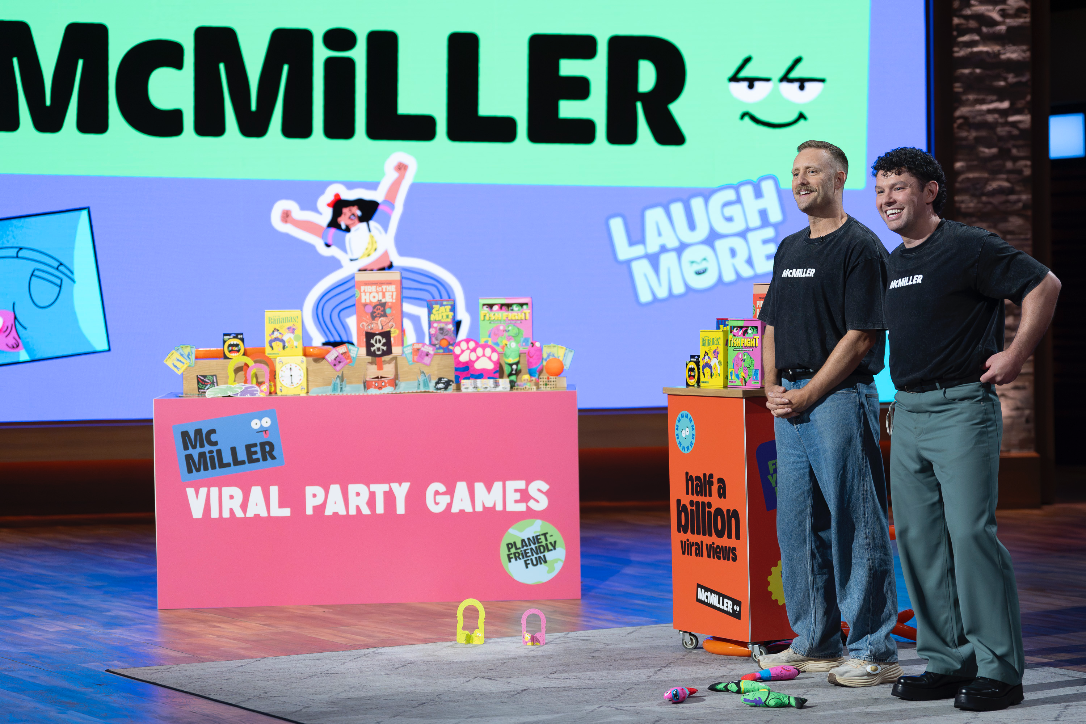
Biographies and Interviews
From Stage Lights to Game Nights: McMiller’s David & Julian on Shark Tank (Dec 10th), Viral Success & Building a Business With Your Husband
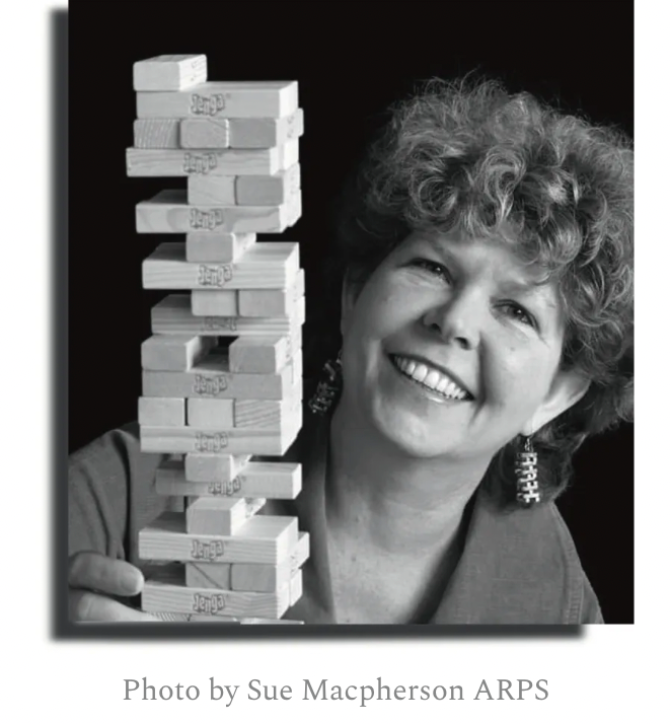
Press Release
Leslie Scott (creator of Jenga) announces the launch of BOUNDLESS PLAY

Press Release
New Study Highlights the Importance of Shopping from Trusted Toy Brands & Retailers this Cyber Monday
See more
Recent Wiki

BOOK REVIEWS
Toy Review: Monster Jam Smash & Bash Grave Digger Monster Truck
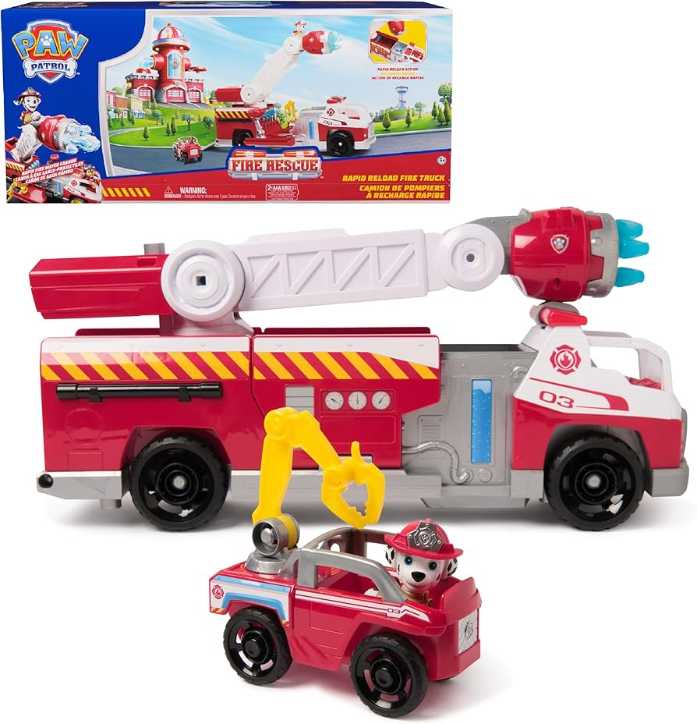
BOOK REVIEWS
Toy Review: Marshall's Rapid Rescue Fire Truck

COMPANIES
Zigazoo Secures Partnership with YouTube Star Like Nastya to Inspire Millions of Kids
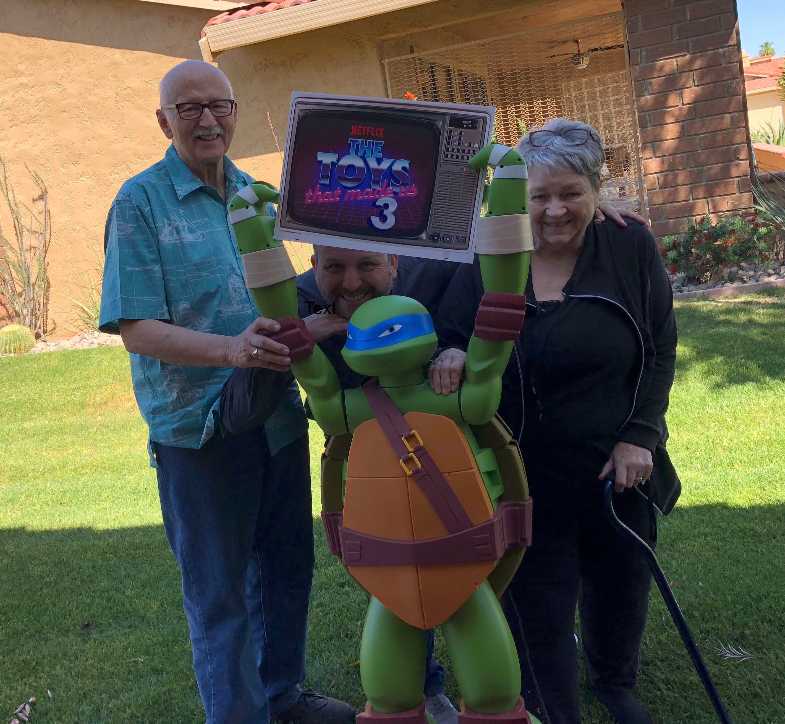
PEOPLE
A Legacy of Play: Inside the Carlson Family’s Multi-Generational Journey Through the Toy Industry

COMPANIES
Radio Flyer Studios Announces the Launch of its First Original Animated Series, Max & Maple: The Can-Do Kids
See more
POP's Got Talent

POP Entertainment
Randy Klimpert Shares his Ukulele Collection

POP Entertainment
Steve Casino Peanut Art

POP Entertainment
Everyone's Talking about POP!

POP Entertainment
Princess Etch - a Multi-Talented Etch A Sketch Artist

POP Entertainment
Joseph Herscher of Joseph' s Machines.
See more
Recent POPcast

Hidden Role: The Brains Behind your Favorite Games
Connie Vogelmann designed Apiary & Wyrmspan!

Hidden Role: The Brains Behind your Favorite Games
Bob Fuhrer... Is THE Crocodile Dentist!

Hidden Role: The Brains Behind your Favorite Games
Tom Dusenberry... Bought Atari, Wizards of the Coast, and Avalon Hill!

Hidden Role: The Brains Behind your Favorite Games
Matt Leacock created Pandemic... the game!

Hidden Role: The Brains Behind your Favorite Games
Scott Brown and Tim Swindle... are Launching a New Sport!
See more
POPDuos

POPDuos: Interviews with Legends and Leaders
POPDuo: Richard Dickson, Mattel’s President & COO, and Kedar Narayan, Young Inventor Challenge AMB

POPDuos: Interviews with Legends and Leaders
POPDuo: Will Shortz and Josh Wardle

POPDuos: Legends and Leaders Explore Creativity
POP Duo: Elan Lee, Co-Founder, Exploding Kittens.and Jeff Probst, Host and Exec Producer, Survivor

POPDuos: Legends and Leaders Explore Creativity
POP Duo: David Fuhrer, MNG Director, Blue Sq Innovations & Shawn Green, past Dodgers & Mets MLB Star

POPDuos: Legends and Leaders Explore Creativity
POP Duo: Bob Fuhrer, Founder, Nextoy and Tom Fazio, Golf Course Designer
See more











